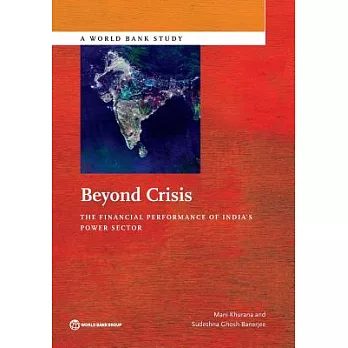"In September 2012, the Government of India approved a financial rescue scheme to revive the power generation sector. This bailout amounted to about Rs 1.9 trillion and came in response to banks and financial institutions with large nonperforming loans to the power sector. This is the second bailout of the sector in a decade. The first was in 2002 when the government had to convert the outstanding arrears of state electricity boards to central public sector undertakings. The 2002 bailout came to Rs 400 billion in state government bonds to restore the sector to financial solvency. The recent crisis and consequent bailout is more complicated than the 2002 bailout. Power sector developments in the past two decades have brought new players into a traditionally government-dominated sector, and they have also been implicated in the crisis. India has adopted transformative policy changes since the last bailout. A landmark Electricity Act was passed in 2003, superseding all previous legislation. The strategic intent of the act was to promote competition by opening all possible avenues for the procurement and sale of electric power. Subsidiary policies and enabling legislation have advanced this process. Competitive markets have evolved and attracted new investments, largely from the private sector. The institutional structure of the traditionally public sector-dominated industry has also been transformed. Aside from the entry of new private sector participants, primarily in generation, the state electricity boards (SEBs) were unbundled into generation, transmission, distribution, and, in a few cases, trading segments. State electricity regulatory commissions (SERCs) were also established in all the states. Over the next two decades, India faces immense challenges if it is to sustain the 8 to 10 percent growth rate required to end poverty and achieve human development goals. According to the Planning Commission, India needs to triple or quadruple its primary energy supply and increase its installed electricity capacity by at least five or six times its 2004 levels to meet demand in 2032. To accomplish these ambitious goals, India will need a commercially viable power sector. This report presents a diagnostic of the financial and operational performance of segments in the power sector value chain between adoption of the Electricity Act, 2003, and 2011, including the factors that contributed to the recent crisis. The report focuses on efficiency and productivity, whether performance has improved over time, and which states have emerged as performance leaders. Analysis of this kind is not new or unique, but this report aims to integrate historical performance, the current situation, and future projections of the impact of worsening sector finances, and the actions that need to be taken to check the downturn.."



 天天爆殺
天天爆殺  今日66折
今日66折 






















 博客來
博客來 博客來
博客來 博客來
博客來 博客來
博客來 博客來
博客來